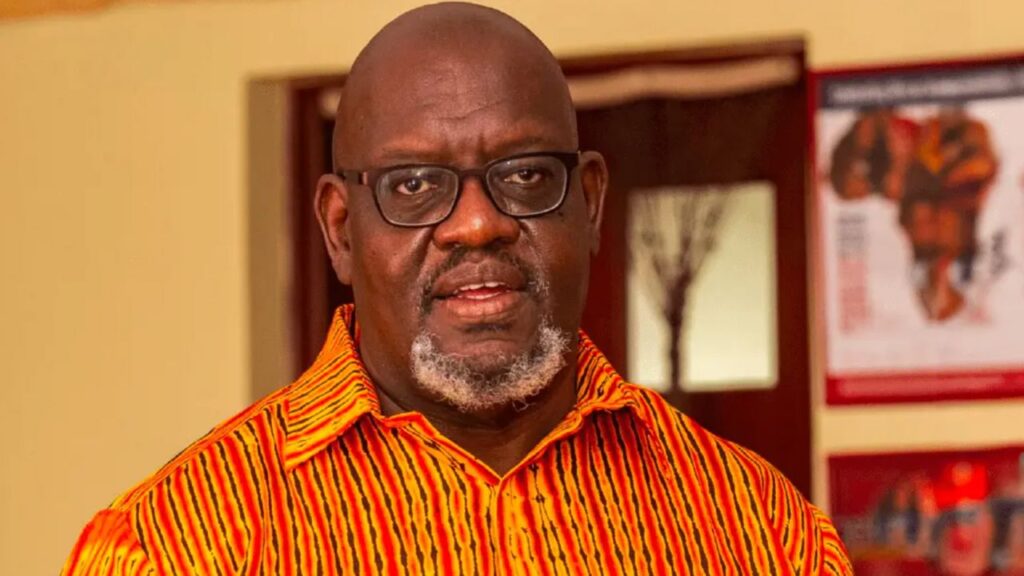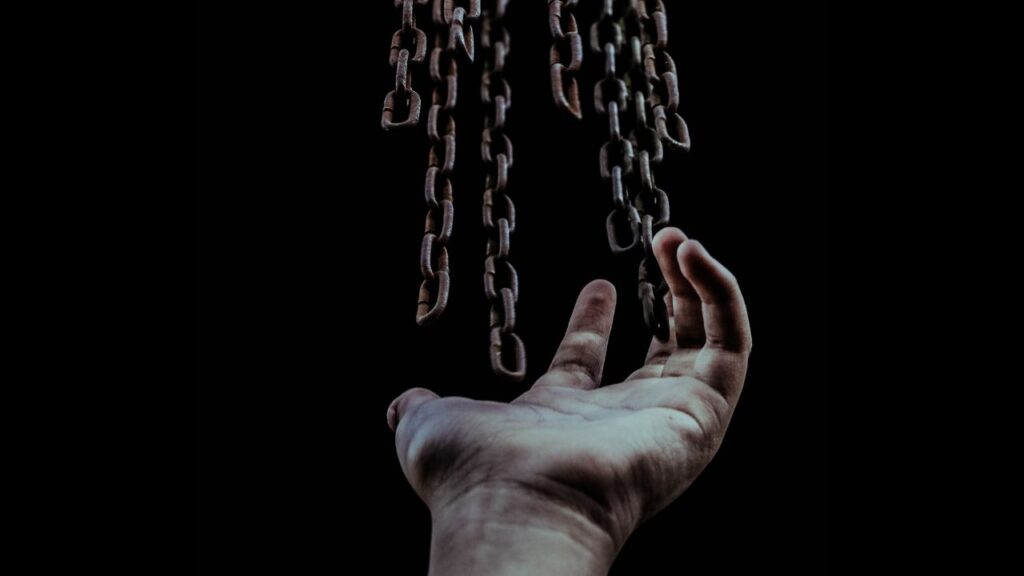After nearly five months locked down at home in the small city of Bozeman in southern Montana, my wife and I recently ventured out for a hermetically sealed road trip. Many of our compatriots were still not taking the COVID-19 pandemic seriously enough, and we wondered if there was someplace within a day’s drive where we could avoid unmasked human spillover from local taverns, family reunions, birthday parties, football games, rock concerts, rodeos, political rallies, county fairs, farmers’ markets or protest marches.
Although rich in social activities, Montana is better known for its big sky landscapes, isolated nooks and crannies and local populations that can be counted on the toes of your two feet. Here, a GPS is useless for lack of detail, so we consulted a real, 3-D atlas to find a suitably quiet spot for a picnic, and off we went.
Just over an hour out, we turned from a minor highway onto a dirt road and followed old tree blazes, breadcrumbs, chunks of rusted cast iron and other detritus deep into the mountain forests of the southwest corner of the state. Our excursion came to an abrupt end at the forlorn little hamlet of Elkhorn. (Population:10)
In the 1880s and 1890s, Elkhorn was at the centre of the richest silver mining region in the world. The nearby town of Boulder boasted that it had more millionaires, per capita, than any place on earth. Elkhorn’s population once topped 2,500 and consisted of miners, engineers, shopkeepers, teachers and a sufficient number of doctors, dentists, lawyers, surveyors, assayers, carters, blacksmiths, bartenders and prostitutes. Unusual for a Montana mining town, many of the workers, mostly from Europe, brought their families with them.
The mine and most of the remaining structures are now in ruins, with only a couple of buildings reoccupied by service sector hands dangling trinkets or claiming to be hunting guides. What caught our eye immediately was a rustic sign pointing to the Elkhorn cemetery, which was almost a mile out of town, around the backside of a mountain along a rocky, overgrown, forest track. There we found the perfect day-trip destination in a COVID-infested world. All the residents were practising horizontal and vertical social distancing; they sported full-body covering; and, there was one hundred percent sheltering in place.
Tombstone tourism
My wife and I are tombstone tourists. We like to wander through churchyards and cemeteries, reading gravestone obits and epitaphs. Each odd-angled monument and slab reveals something about the place and its people – even if it’s only a couple of dates and a name. Each is a particle of evidence, waiting for Wikipedia to provide context. It’s a painless way to learn history.
The Elkhorn cemetery occupies the side of a steep hill with perhaps a hundred and fifty graves scattered among the pine trees and boulders. We could identify a few oldsters, but most of the dead seemed to be in their twenties and early thirties. That was strange. More startling was a whole section of the hillside where were buried only children – dozens of them from age zero to about ten. And all had died within the two years between 1888 and 1890. Clearly something awful had happened in Elkhorn.
That awful something was diphtheria, a bacterial disease with symptoms and effects eerily similar to COVID-19. Unlike COVID, which is known to prefer vulnerable elders, diphtheria selects the young. Even though Elkhorn lies isolated high in the mountains, in its heyday, inhabitants moved in and out fluidly without restriction. There was even a narrow-gauge railway with daily service twelve miles down to Boulder city. This measure of mobility exposed nearly everyone to diphtheria. The close environment of the mines created conditions for transmission among many young men. One-room schools, packed with kids, helped to spread the deadly disease among the town’s children. In that pre-vaccine era, the deceased were isolated from the living by locating the cemetery at what may have been thought to be a safe distance from town. This primitive form of zoning was Elkhorn’s only apparent response to a virulent disease.
The diphtheria epidemic was not the direct cause of Elkhorn’s demise. In fact, the high death rate did little to deter the town’s frantic pursuit of profit. Mining persisted for several years after the epidemic peaked. Elkhorn’s downfall was actually the result of a crash in the silver market.
In an attempt to loosen the national money supply, which was backed by the country’s gold reserves, the Silver Purchase Act of 1890 required the U.S. government to buy tonnes of silver. This had the effect of driving up the price of silver, which greatly pleased the miners. An alliance between grassroots populists and the silver mine owners lobbied to place the USA on a bimetallic (gold and silver) currency standard, but the movement eventually lost steam. Gold, not the relatively abundant silver, would continue to back the value of paper money well into the 20th century. Soon there wasn’t enough gold in reserve to secure the amount of paper currency in circulation, and the Panic of 1893, a great depression, hit the whole country like a flash fire in tunnel 13.
The crash of the national silver market left Elkhorn’s remaining residents with no economic reason to stay in their once-thriving community. With no market for its silver, Elkhorn finally withered and became a ghost town. External forces, political and economic, had made planning for Elkhorn’s future impossible and unnecessary. The town became collateral damage in the capital wars among the one-percenters of the Gilded Age.
A Kenyan detour
As we unwrapped our cheese and pickle sandwiches in front of the boarded-up Home for the Feeble Minded (that’s what they used to call people with developmental disabilities), my wife asked, “Why do you suppose they put a mental institution like this in such an out-of-the-way corner of the state?”
We had decided to save lunch until we got back down to Boulder to investigate the grand Italianate Revival red brick edifice that had first opened in 1905.
“It could have been a gift from the state legislature at a time when Boulder was losing its economic base,” I said. “All those millionaires must have had some political influence. Or, it could have been to hide people with embarrassing conditions…embarrassing to their families. The atlas says this area produced 4 million pounds of lead, which is often associated with silver. The toxic waste from that much lead coming out of the mines must have dropped everyone’s IQs lower than squid shit.”
She gave that some thought and asked, “What does this place remind you of? No, not this place. The old mining operations.”
Without waiting for my brain to engage, she answered herself. “It’s like Kenya and the colonial capitalism that was going on when we left. Developers from outside – from the UK, Holland, USA, China – put up the capital, upped the value of their investments with tax holidays, underpaid workers and monopolies given out like royal land grants and carted away the profits. Minus twenty-plus percent for the president’s favourite charity.”
“Yeah,” I agreed, “they even brought their own cart. But there’s been nothing like a diphtheria epidemic in Kenya, where workers and their families would have been forced to endure with little help. Unless you count malaria. Besides, the jobs created by foreign investment paid pretty well didn’t they?”
“I think I said ‘underpaid,’ didn’t I? Certainly not paid enough for decent housing, school fees and retirement. And capitalism has brought its own versions of the plague to Kenya. Think about the conditions in Nairobi’s massive slums. Political corruption. Destruction of fragile ecosystems. Pollution of Lake Naivasha from chemicals and fertilizer. So, what about the flower business, itself?
“I see your point.” I wasn’t going to argue. I had read that weddings and other big flowery events have been cancelled all over the world after COVID jumped the pond. At the time, Kenya was employing something like 150,000 workers in the flower business and shipping US$1 billion worth of geraniums, roses and carnations per year. Forty-two cargo flights every week, just to the Netherlands. Now, all those flowers are going straight into the compost.
“So, the bottom dropped out of the Kenyan ‘silver market’,” she said, shaking her head. “Where did that leave all those workers? Selling trinkets in a ghost town?”
“Luckily, Naivasha isn’t a one trick pony, it’s a town with options. Not 150,000 worth of options, though, and, if the pandemic doesn’t end soon, Kenya may be dealing with more than a few ghost towns. I suspect people are already moving back upcountry.”
“That’s always been the Kenyans’ main safety net, hasn’t it? That’s where Rose’s family went during hard times.” (Shortly after we left Kenya for the US, our Kamba neighbour and good friend, Rose, decided to look for work upcountry and took a job at a clinic in Embu. Nairobi had always been tough on her kids.)
“Wups! We had better get moving.” I could see in the mirror that the sky was filling with black clouds and streaky lightning. “Those clouds look like they’re getting ready to let loose the artillery. This car is too flimsy to hold up in a barrage of Montana ice bombs.” We both were remembering the hailstorm of 2010 that kept the panel beaters happy for a year.
Business, as usual
After returning to Bozeman later that evening, we saw in the day’s newspaper that Montana’s institutionalised elders were being hit hard by the virus – one memory care facility already had fifteen deaths. Nationwide, old folks living in congregate care facilities make up just one per cent of the population but are now close to fifty per cent of all COVID deaths in the US, where elder care is a lucrative and poorly regulated business.
From a sidebar on page one, we learned that President Trump is insisting that all children in the US are to be sent back to school in the autumn despite the danger from forced proximity. The better to hasten their parents’ return to the labour force and, thereby, reduce the unemployment numbers prior to the general election in November. The paper reported that seventy-five per cent of our local parents agreed with the president’s policy of sending their kids daily into a petri dish of potential disease! The need for a basic income with which to purchase the necessities of life was overriding medical science, good policy, common sense and even parental responsibility. Where was our government?
Turning to page two, we found Congress dithering over the allocation of money to temporarily provide a minimum income to families out of work or otherwise in need because of the virus. Service employees were especially hard hit, as restaurants, bars, beauty shops, nail and hair salons and other close-contact businesses shut down for the duration, which might be forever as far as anyone knew.
Further down the page, the governor of Florida was cooking the COVID death statistics so he could justify reopening the state’s economy. Look! Things aren’t so bad! Back to work! On to Disneyworld! Spend! Florida soon had the highest COVID infection rate in the US, the country with the highest infection rate on the planet. Young adults, anxious to get out and party in a state that specialises in partying, took heed of the governor’s fairytale justification, went out, scooped up the virus and generously spread it around. The governors of many states that had already closed down buckled under pressure from their chambers of commerce and allowed or mandated businesses to reopen prematurely.
Businesses at the gateways to nearby Yellowstone National Park applauded the government’s decision to open the park to visitors from around the world, none of whom would be subject to quarantine. Employees of park concessionaires are already testing positive for COVID.
Even our state university, a local money-spinner with 16,000 students, was saying that it will reopen this fall with in-person classes – but no testing! We wouldn’t want to cull the herd too early, before tuition fees have been paid.
To read about it in the news, the whole country was performing a high-wire act without a safety net. For over a century-and-a-half, a limitless array of business deals and their promised billions had hogged the spotlight in America’s economic circus, leaving public health and other social issues with little more than pennies from heaven. The tale of Elkhorn is not one of a town laid low by rampant diphtheria but one of business as usual in spite of that awful disease. It’s happening again today but at a vastly greater scale and with devastatingly widespread consequences.
Hello! Emergency assistance?
Ignorance of biological causation was a contributing factor in earlier epidemics. We can’t say that today. We know that immobilising whole populations, prohibiting all large and most small gatherings, restricting travel to zero, quarantining, face covering, minimising exposure to others, social distancing, testing, contact tracing and frequent sanitising are all necessary to stop the spread of the virus. Modifying social behaviour is the key to successful suppression, even if it requires enforcement of stringent regulatory measures and cutting off sources of income.
With incomes diminished, we also know that greater social security payments, paycheck supplements, universal healthcare, loan forgiveness, rent subsidies, free child care, school fee waivers, home care for the vulnerable and accessible technological surrogates for face-to-face contact are needed before individuals can afford to modify their behaviour. Such an array of social and economic lifelines, normally paid for by progressive taxation and deficit spending, will be required for the country to survive this pandemic. Why, then, are we not organising our resources to do these things?
Hope is on the way
Years ago, I worked with a British ex-air force officer who had had the job of predicting the weather for the Allied invasion of Normandy. In other words, to determine what day would be D-Day. The secret in that era of primitive weather forecasting was what meteorologists called the Persistence Theory. That is, tomorrow’s weather in the English Channel will be much like the weather today. If the weather has been slowly trending toward less rain and wind, the trend should persist for a few more days. Not much hard thinking involved, he said. Just note the trend and work with it.
The same is true of anything riding on capital markets, which is to say almost everything in America. There is a great amount of inertia in waiting for venture capital to turn a profit and for existing assets, like oil wells, to be thoroughly wrung dry. This results in a perverse lack of planning. American cities march to the discombobulated cadence of opportunistic capital investment schemes, both public and private. In a capitalistic environment, order won’t be created by the occasional regulatory device. And, it certainly won’t be commanded by city planners that don’t understand the stakes. Our cities are a farrago of costly investments and will not easily trade their sunk costs for some more organised vision of the future. Disorder, in the service of greater profit, is a dominant trend in our society and we’ll stick with it.
Investors, financiers and other capitalists believe they can tolerate the dead bodies, social disruption and lingering after-effects of a pandemic – or of global warming, for that matter – as long as dividends, interest and other payments arrive on time and in sufficient quantities. And, if profits fall below expectations, the rich are powerful – and corrupt – enough to demand that the government provide a bailout even before it provides personal protective equipment, testing kits and ventilators. And this dystopian state of affairs will persist until the day we realise that health, safety and the general welfare can only be guaranteed within a completely reformed socio-economic system that puts human life ahead of profit – by transforming the greedy frog into a munificent prince.
As we adjust to living with COVID, we may notice trends that signal a growing popular response to social and economic pressure, and we may try to accommodate those trends. We may begin to see that people, seeking healthier environments, are moving from more dense urban to less dense suburban and rural settings, like Kenyans moving upcountry.
Cities and towns may then become aware of a commensurate shift in infrastructure needs. People are already gathering in fewer large public venues much less often and at lower densities. Will these venues – schools, universities, stadiums, arenas, churches, concert halls, theaters – remain viable? If not, will they need some kind of support? Will they convert to virtual venues? Or will they wither away? What about changes in the volume and patterns of our consumption? Our housing? Our mobility? It’s too early to say if we will even be able to adapt to the coming disruptions on our own terms. External factors, like an election, the weather or a pandemic may determine our lives from now on.
On the radio the next morning, we heard that the American economy shrank by over thirty per cent last quarter. This is the greatest downturn ever. Despite all efforts by the business community and its praetorian politicians to reassure Americans that normal is just around the corner, we aren’t buying it. Most of us are too frightened. When we can see the bodies stacked in front of makeshift morgues, we know there is a problem so serious that the usual propaganda and marketing abracadabra won’t work. We’re just not going to do the things that have kept money in circulation. The COVID pandemic is already gnawing at the foundation of our consumptive (pun intended) economy.
But, this is still capitalist America. Before our plutocrats and oligarchs divert their wealth to build a people-friendly, post-pandemic state – a new “city on a hill” – they will first reap the profits that lie along the present path, as rocky as it may be for the rest of us.
Meanwhile, they offer us hope that the old normal will return with the discovery of a vaccine. A very profitable vaccine.








